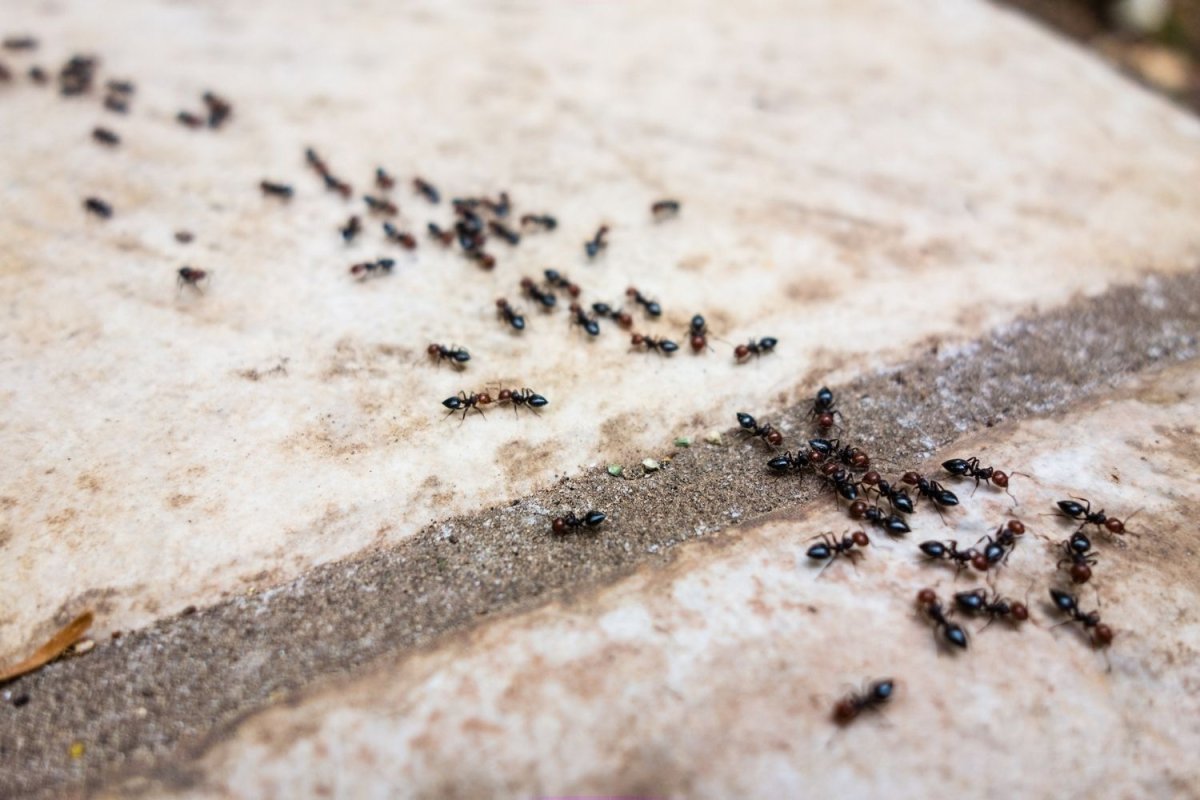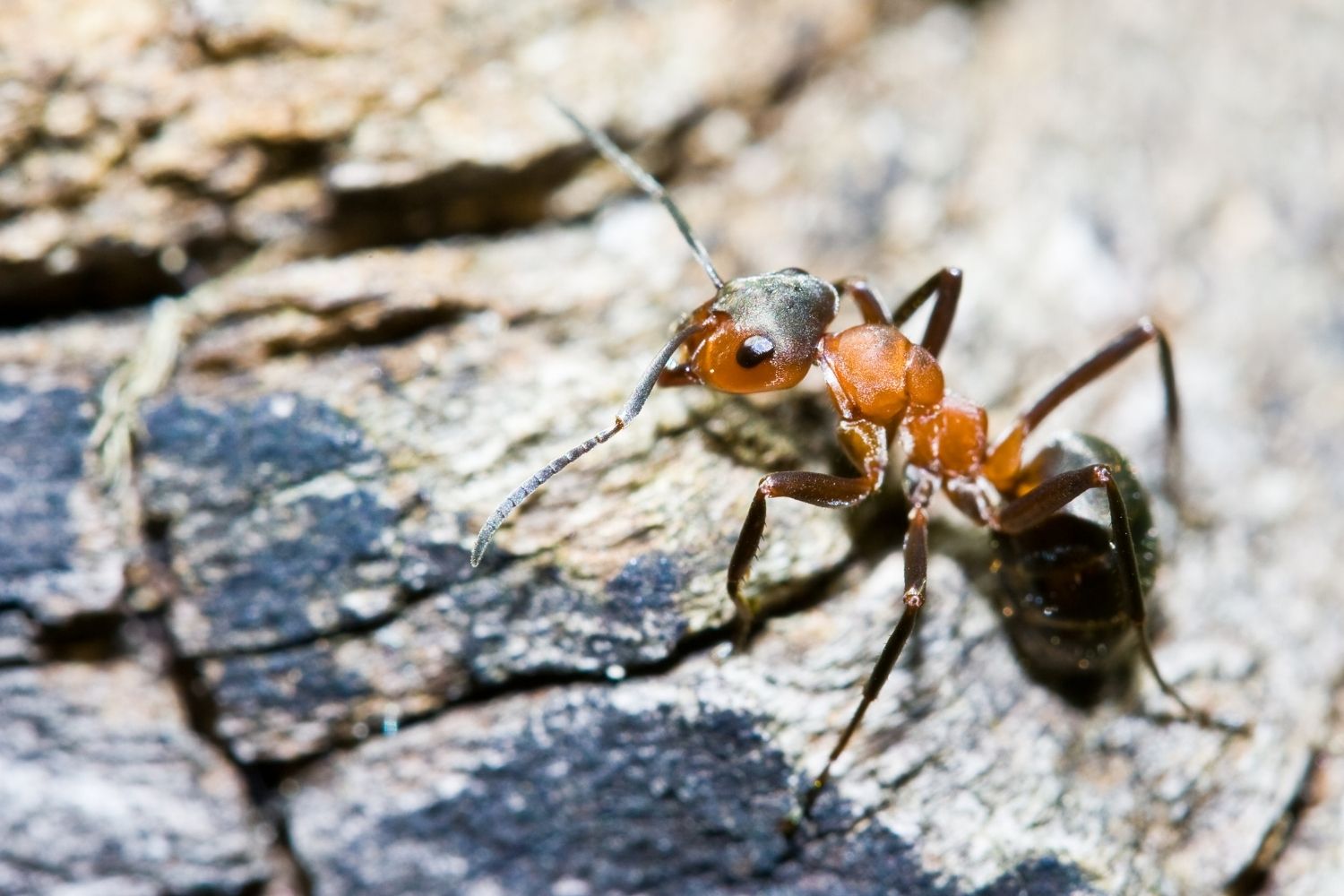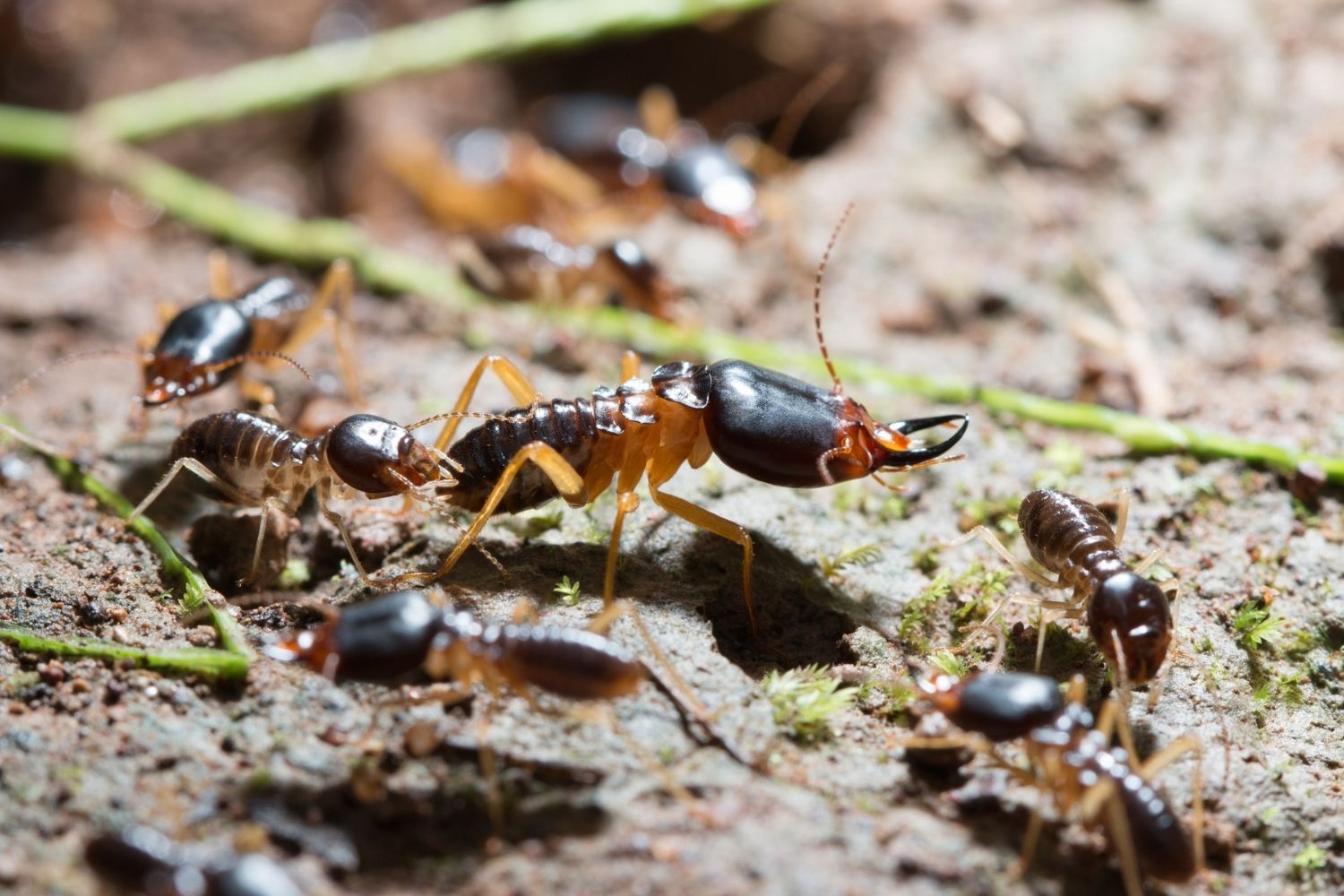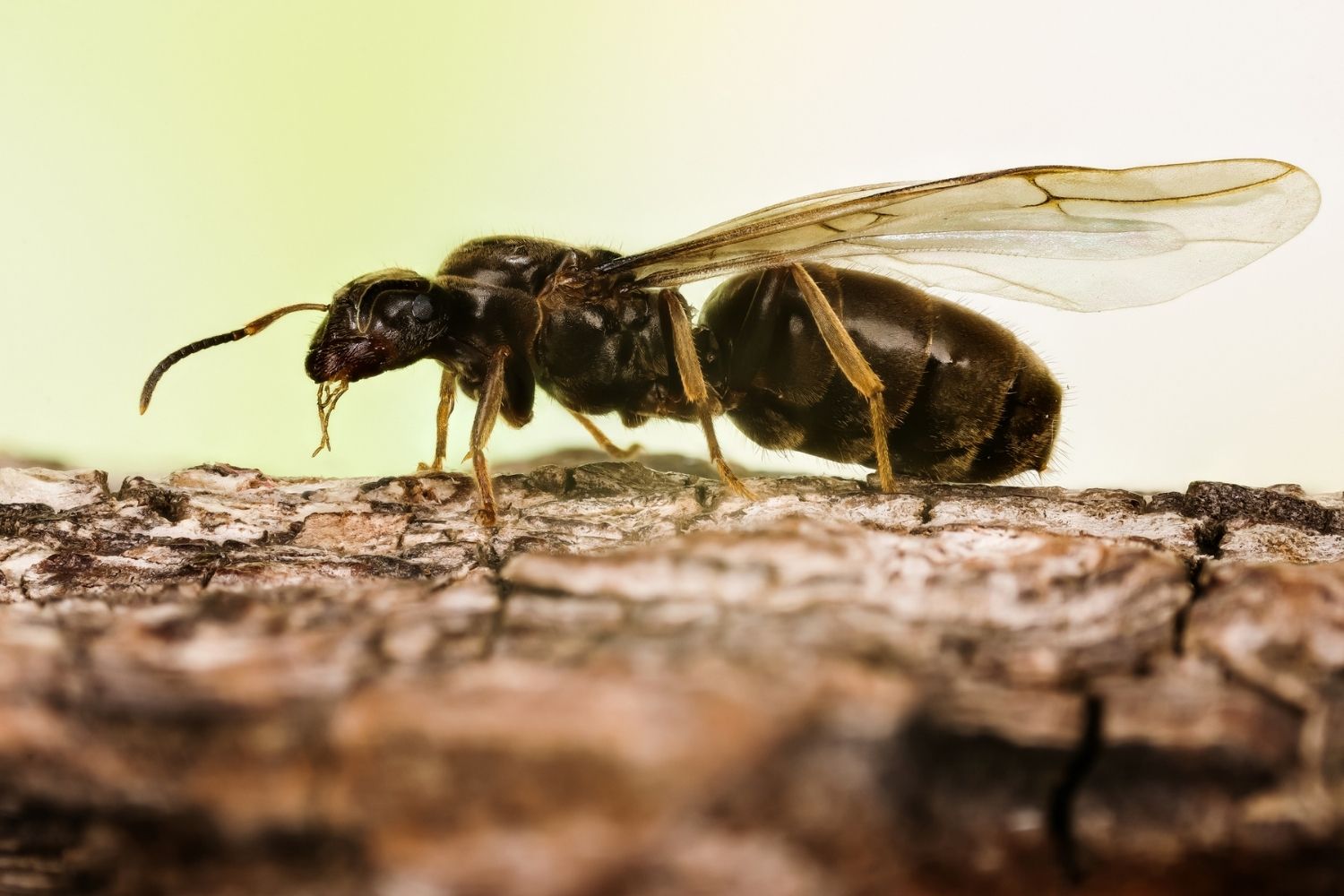

We may earn revenue from the products available on this page and participate in affiliate programs. Learn More ›
Although they share specific characteristics, termites and ants are two different types of insects. They each present their own problems and require different treatment services. When it comes to termites vs. ants, one can be commonly seen in the open, while the other is more discreet but causes severe destruction to the home. Whether you need to get rid of flying ants or call in a termite exterminator, it’s advised to recognize the following differences before taking action.
1. Termites have straight antennae, while ants have elbowed antennae.
You can look closely at the antennae of the species you’re trying to identify to determine whether it’s an ant or a termite. While ants have elbowed or bent antennae, termites have straight antennae. Although this may seem like a subtle difference, it’s enough to tell the insects apart so you can proceed with extermination or other services should you need them.

2. Termites have straight, wide bodies, and ants have narrow, pinched bodies.
Once you’re close enough to compare the bodies of termites to ants, you’ll likely see that the abdomen on a termite has no defined waist. Unlike ants, which have a well-defined, pinched body, termites are rectangular. If you can inspect both insects closely, this difference can help you determine which pest is present.
3. Wood damage indicates the presence of termites. Ants won’t damage wood.
Since ants typically don’t eat wood, they likely aren’t the cause of any significant structural damage to your home, should you have any. On the other hand, termites consume mainly wood, paper, and other cellulose-rich substances and can wreak havoc on a home. If you notice wood damage on your property, you may need to call in an expert to determine if termites are to blame. Piles of sawdust or wood pellets are other indicators that there’s likely a termite infestation, and the problem needs to be treated.

4. Ants are drawn to food debris. Cellulose-rich things like wood and paper will attract termites.
Ants are omnivores, which means their diet consists of food from both plants and animals. They’re also attracted to debris from food, which is why you might have seen a line or group of ants surrounding waste from a public trash can or near a pet food bowl. Termites, however, strictly consume cellulose-rich items such as wood and paper. They’re more likely to be found in drywall, cardboard, insulation, wood, and other materials that contain the cellulose they seek.
5. Ants have a shorter lifespan—about a few months. Termites can live for a couple of years.
The life cycle of an ant consists of four stages: egg, larva, pupa, and adult. Although queen ants can live for years, the typical worker ant usually only lives for a few months. The termite life cycle, however, is much longer. Queen termites can live for decades, while common termites survive for a couple of years. Termites have more life cycle stages than an ant: egg, larva, nymph, molting, and full maturity. Because of this extended life cycle and the colony’s social order, termites live longer than ants.

6. Winged termites have wings of equal lengths, while flying ants have an unequal wing length.
Although both flying ants and winged termites have four wings, the appearance of their wings can help you determine which one you may be dealing with. Termites have wings that are equal in length and are longer than their bodies, while flying ants’ wings are unequal in length. An ant’s back hind wings are shorter than its front fore wings, and they are pretty proportional to their bodies. Termites also have very fragile wings that can fall off easily, and if you see fallen wings in your home, this can sometimes indicate an infestation.
7. Termites are lighter in color. Ants are a darker red to black.
If you’ve spent a decent amount of time outdoors, it’s safe to assume you’ve seen ants either in your yard or in other outdoor settings. If so, you’ve seen their dark-colored bodies. Ants are often dark red to black in color and can be frequently seen in the open as they gather and look for food. On the other hand, termites are translucent and light-colored or white, and they tend to avoid light. It’s unlikely you’ve seen them outside unless you’ve been actively searching for them, as they tend to congregate in dark places.

8. Termites require immediate care from an expert. Fire ants or carpenter ants will also need a pest control pro.
Both ants and termites can require the help of a professional exterminator or pest control expert to eliminate the problem and ensure your home is free from potential damage. But since termites can cause structural damage that isn’t always immediately noticeable, it’s best to consult a professional once you’ve identified them. Fire or carpenter ants can also be hard to eliminate on your own, so it’s wise to seek help if the pesky insects continue to infiltrate your home, whether they’re outdoors or inside.
